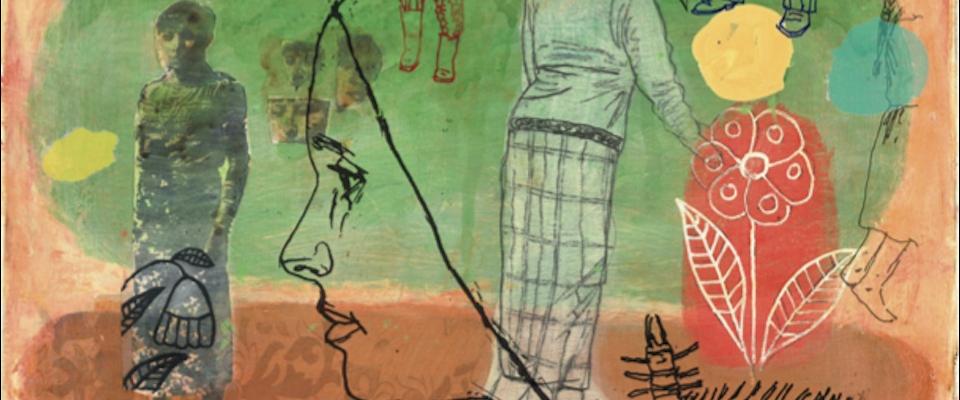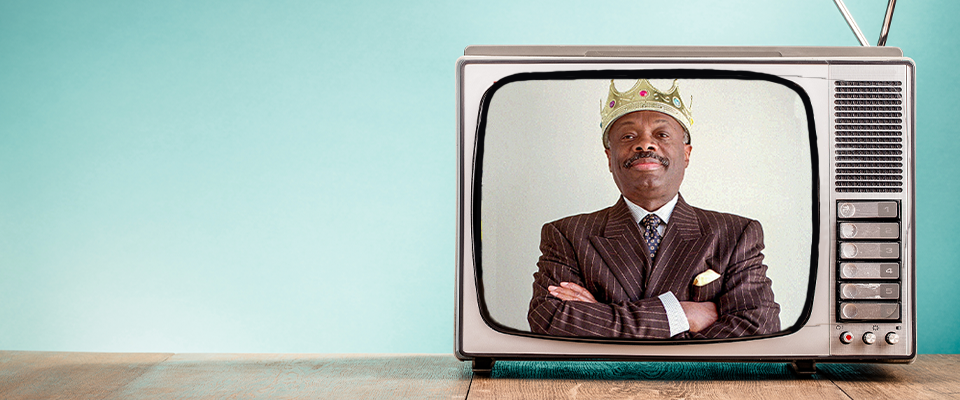Among those appalled by the 2014 publication of Forcing the Spring was Martin Meeker, a historian with UC Berkeley’s Oral History Center. Subtitled Inside the Fight for Marriage Equality, the book, by Pulitzer Prize-winning reporter Jo Becker, spotlighted high-profile attorneys and what proved a limited, statewide victory. But where were the grassroots activists who had struggled for years to win not just legal battles but hearts and minds, who had dedicated themselves to achieving the right of gays and lesbians to marry not just in California but everywhere in America?
When that sweet, long-sought victory finally arrived in 2015, Meeker, now the OHC’s director, connected with Evan Wolfson, who had founded Freedom to Marry more than a decade earlier with that single objective. The result was the Freedom to Marry Project, for which Meeker conducted in-depth interviews with 23 veterans of the fight for marriage equality. Released in 2017, the project is a catalog of voices from the grassroots, featuring the unsung activists who guided the messaging, field organizing, lobbying, and state-level litigation largely ignored by Becker’s account.
“The heart of oral history is trying to capture the experiences of someone’s life, or a movement or time period, before they’re lost.”
Forcing the Spring, asserts Wolfson in the course of some 17 hours of conversation with Meeker—page 242 of the transcript, for those following at home—was “an effort to displace all of us,” a misleading tale of famous lawyers and Hollywood celebrities “waving a magic wand” to bring about social change. In shifting the focus to grassroots activists, the Freedom to Marry project serves as a model of what Shanna Farrell, who joined the center in 2013, describes as oral history’s original purpose: “putting voices in the historical record that hadn’t been there before,” and “challenging ‘history with a capital H.’”
The term “oral history” itself can be traced to Joe Gould, the proudly indigent hero of a celebrated 1942 New Yorker profile and would-be author of a magnum opus he called An Oral History of Our Time.
“What people say is history,” declared Gould. “What we used to think was history… is only formal history and largely false. I’ll put down the informal history of the shirt-sleeved multitude—what they had to say about their jobs, love affairs, vittles, sprees, scrapes, and sorrows—or I’ll perish in the attempt.”
In fact, Gould perished in 1957 without ever publishing. But the mantle of oral history was taken up in the academy—first by Columbia University and, not long after, by UC Berkeley. Today, 65 years after its founding, the Oral History Center continues to build its digital archive, and to make it more accessible to those with an interest not just in conventional history but, as Gould put it, in “what people say.”
Established in 1954 as a research unit of the Bancroft Library, the Oral History Center—known, until 2014, as the Regional Oral History Office, or ROHO—today boasts a digital archive of some 4,000 interviews, many of them conducted over many hours in multiple sessions, typically at the subjects’ homes or offices.
But this wealth of material has not brought with it a wealth of resources. Despite its lofty pedigree and ambitious mission—to document the history of the university, the West, and the nation from a multitude of perspectives—the center’s place in the UC family falls somewhere between stepchild and latchkey kid. Only one-tenth of its annual $1 million budget is paid by the university, while endowments cover some 20-25 percent. And there’s no development staff, so it’s up to interviewers themselves to raise the vast majority of funds.

It’s this paucity of institutional support that explains the center’s highly eclectic mix of topics. The treasure includes both standalone autobiographies, from Ansel Adams to Stephen and William Zellerbach, and multi-voice projects on topics as disparate as West Coast cocktails, the Sierra Club, and the travails of Berkeley’s first African American faculty and senior staff. The earliest interviews, by the Bancroft’s founder and namesake, Hubert Howe Bancroft himself, date back to the 19th century. Among those in the wings are sessions with California’s most recognizable Browns, Jerry and Willie.
There are business-related projects, such as Dreyer’s Grand Ice Cream and Kaiser Permanente, and one-offs with community members or family elders whose relatives are willing to fund the work. Other projects shed light on pivotal eras and events, such as the birth of Chicano studies, the disability rights movement, Japanese-American internment, Rosie the Riveter, and seemingly everything in-between. Meeker, who hired on full-time in 2004 and took the reins as director in 2016, dubs this the OHC’s “entrepreneurial” approach to oral history.
“The heart of oral history,” says Todd Holmes, a historian who joined the center in 2016, is “trying to capture the experiences of someone’s life, or a movement or time period, before they’re lost.” He has found the method especially useful for exploring little-known facets of intellectual history, as he did in interviewing dozens of scholars to commemorate 50 years of Chicana/o studies. But even when dealing with seasoned, spin-savvy politicos—Jerry Brown, for example—a well-prepared interviewer, over the course of multiple sessions, can not only practice various forms of live fact-checking, but tease out backstories and counternarratives absent from historical monographs.
“From a scholar’s point of view, oral history supplements the archives,” says Holmes. It was while researching his dissertation, about Ronald Reagan’s governorship in California, that he discovered the OHC through its oral history projects on state government. “I learned very early on as a historian how important those [projects] were.”
For Meeker, making the center’s work widely available—to scholars and non-scholars alike—is as important as what people do with it.

“The oral historian is providing this material to you so you can do with it what you want,” he explains. “I mean, we certainly write our own interpretive books and articles, and we hope people will read those. But with our work at the Oral History Center, I think that we’re also doing something different, and that is providing the public writ large with the raw materials to develop their own interpretations of history based on first-person testimony.”
For those who care to explore, transcripts of most interviews are available online (as are video and audio for many) and searchable across the entire catalog. And for those who lack the taste—or the time—for raw materials, the center continues to look for ways to reach a wider audience through blogs, podcasts, and short video trailers featuring highlights of major projects.
“We’re trying to raise more funds so we have more flexibility in our schedules, so we can do more interpretive work,” says David Dunham, who runs point on technology and manages the center’s Rosie the Riveter project, a 250-plus-interview look at the home front during World War II, in collaboration with the National Park Service. “But the heart of what we do,” he adds, “is conducting the interviews.” This typically involves traveling to subjects’ homes and offices, often in far-flung parts of the country, and—before sitting down for videotaped sessions—sharing outlines of topic areas to be covered, an opportunity for those being interviewed to refresh their memories in advance. Interviewers also employ a kind of live fact-checking, offering up helpful reminders in real time or gently pushing back against dubious assertions.
Once the interviews are completed, subjects are given a chance to edit the transcripts, a practice Meeker says encourages them to speak freely. “People will say something like, ‘Oh, we’ll probably want to get rid of that.’ But they say it anyway. And if they didn’t have that right, they would have never said it to begin with.”
Meeker himself discovered oral history back in his days as a grad student at San Francisco State, where his interest in gender history led him to what’s now the GLBT Historical Society. Interviews he conducted later for a book about “the great gay migration of the 1970s” helped open his eyes to the method’s potential for revealing more personal, if subjective, aspects of history.
“I kept hearing the important part of the whole experience was being connected to something, being connected to a place, to knowledge, to other people, to a social movement,” he recalls. “This process of going from ignorance, being in the dark, being isolated, to some form of connection, whether it was physical or intellectual, was something that nobody had ever really written about.”
“I think that we’re also doing something different, and that is providing the public writ large with the raw materials to develop their own interpretations of history based on first-person
testimony.”
Yet even as it was a historical process, it was also an individual one, different for each person who lived it. And it’s the experiential, sometimes slippery nature of personal testimony—especially when recollections have dimmed with time, or contradict others’ accounts—that distinguishes oral history from “history with a capital H.”
“Memory is a really big part of it,” explains Farrell. “And if, like me, your goal is to put it out there and have people work with the material, or you want to tell that story and interpret it somehow, having that uncertainty is really engaging.”
“The kinds of projects that I find to be most interesting and fulfilling are the kinds where we’re doing at least a handful of interviews around a particular topic,” says Meeker. He calls this “the Rashomon view”—a reference to Akira Kurosawa’s black-and-white 1950 classic take on the subjective nature of truth—“where you’re getting people talking about the same event but talking about it from a different vantage point and coming up with a different description, a different version of the event—causation, key people, all these things end up being different.”
“It’s really important to get that history recorded,” Barbara Cox, a founding member of Freedom to Marry’s steering committee, tells Meeker near the end of their three-hour interview —page 37 of the transcript, for those following at home. “And it’s important, I think, for historians and history to recognize that there were many, many, many people who played an important role in this movement.”





















